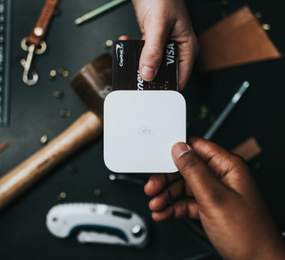In Africa, financial inclusion has always been a major concern. African financial systems, according to Beck and Cull (2015), are less inclusive than those outside of Africa. After excluding high middle-income nations, they find that in the median African country, 21% of enterprises have a line of credit and 16.5 percent of consumers have an account with a formal financial institution. Financial systems in Africa generally lag behind those in other developing economies, despite the fact that many significant improvements were implemented within the past decades.
An international comparison of private credit to GDP - the main indicator of financial depth - shows a gap with other developing economies (World Bank, 2012). For example, the ratio of private credit to GDP averaged 24% of GDP in Sub-Saharan Africa in 2010 and 39% in North Africa, compared with 77% for all other developing economies, and 172% for high-income economies. The non-bank segments of Africa’s financial systems show an even lower degree of development than banking. Less than half of African countries have stock markets and only a few of these are liquid (Beck, et. al. 2011). With the exception of South Africa, African stock exchanges are small as measured by the ratio of market capitalization to GDP—only 38% on average, as compared to 44% in all other developing economies and 62% in high-income economies (World Bank, 2012). In addition, African stock markets are among the most illiquid in the world as measured by the ratio of trade to listed stocks (Beck et al., 2011).
Mobile money and agent banking have been the primary drivers of Africa's amazing increase in financial inclusion over the last few years. Traditional financial institution accounts are lagging behind in terms of growth. When they do rise, it appears to be a result of the mobile money revolution. The message is clear: Africa's banking system will be digital in the future. Every day, innovation is put into action across Africa, assisting more unbanked and underserved Africans in significant ways.
Despite Africa's recent financial sector growth in recent decades, many individuals and businesses remain unable to access financial services throughout the continent. An examination of how consumers and businesses use and access financial services reveals that African countries lag behind other developing economies in both areas, and that cost, distance, and documentation requirements are important obstacles. These barriers tend to decline as per capita GDP rises. Barriers faced by both households and enterprises also tend to be lower in countries with more competitive, open, market-oriented, and well-regulated financial systems with more developed contractual and informational infrastructures (World Bank, 2008).
Increasing financial inclusion by removing physical, bureaucratic, and financial barriers is difficult because it also necessitates addressing the underlying structural causes. Measures to increase the contestability of financial systems and the underlying information and regulatory environment, on the other hand, are likely to hasten the introduction and adoption of innovative goods, processes, and technologies that may further lessen these barriers in Africa. However, the recent success of mobile money in sub-Saharan Africa shows that innovations can bring about dramatic changes in how people engage in financial transactions by lowering entry barriers, reducing costs, and expanding access.
At the 2nd Annual Banking Innovation Africa Forum, OdhiamboOdhiambo Evans is set to give a breakdown of financial inclusion on the continent. He is the head of transactional banking at I&M Bank and he’d be joined by other experts and stakeholders in discussions that could shape the future of Africa’s banking sector.
















